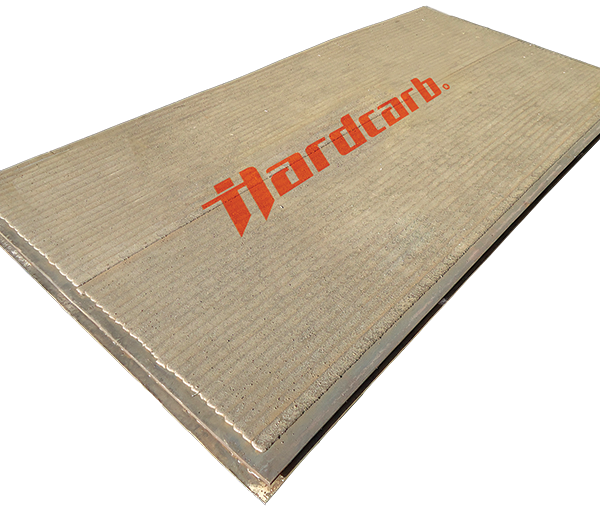Hardcarb 3999



Iron base hardfacing superalloy possessing excellent abrasion and erosion resistance at elevated temperatures. Perfectly suited for applications such as fan rotors, furnace top bell facing, hot dust ducts, screens, sinter crushers. Also recommended for single layer hardfacing as over-alloying enables high hardness and good properties in first layer of hardfacing.
Weld deposit characteristics:
A revolutionary superalloy featuring a sub-micron microstructure due to rapid undercooling achieved during welding. The alloy is extremely abrasion-erosion resistant, contains high volume of hard phases and exhibits superior high temperature hardness. The weld deposit exhibits cracks, cannot be machined and has limited shock resistance. The alloy should not be used over conventional high C hardfacing material or manganese steel as it may lead to spalling.
Recommended uses and applications
Typical applications:
» centrifugal fan impellers, casings
» blast furnace charging chutes, top bells
» sinter crushing: spikes, grizzly bars, crush decks
» intensive mixer beaters and scrappers
» vibratory screening deck plates
» hot dust ducts
» for single layer hardfacing in any abrasive, erosive
environment
Additional info
Anti-wear suitability
| Metal-to-Metal friction Metal surfaces in relative motion forced into contact with or without lubricant. Degradation by the formation of micro-welds between the contacting surfaces. | - |
| High pressure abrasion Wear by relative movement under pressure of mineral particles of suitable hardness, shape and texture to remove material from the metal surface, leaving superficial deformation. | - |
| Cavitation Tearing out of grains from the metal surface by the formation and implosion of bubbles in a liquid in rapid motion. | - |
| Mechanical fatigue Fatigue and formation of cracks in surface regions due to tribological stress cycles that result in the separation of material. | - |
| Thermal fatigue Cyclic exposure to high temperatures leading to permanent deformation by alternate expansion and contraction. Alteration of the structure and properties of the material. | - |
| Hot oxidation Creation of a poorly adhering oxide layer that reforms constantly. Degradation by loss of material thickness. | Highly suitable |
Workability
| Work hardening Work hardening is the process of making a metal harder and stronger through plastic deformation. When a metal is plastically deformed, dislocations move and additional dislocations are generated. | |
| Edge retention Suitability for creating sharp edges and retaining them during operation. | |
| Machining Machinability is the ease with which a metal can be cut (machined) permitting the removal of the material with a satisfactory finish at low cost. | Not possible. Only grinding possible. |